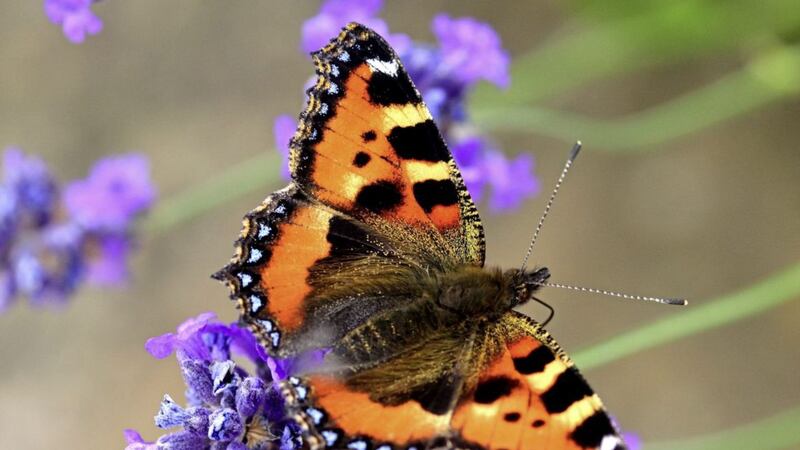ON THE basis of anecdotal evidence I expected butterfly numbers to be up this summer. Gardeners and non-gardeners alike spoke of unusually high butterfly numbers, many attributing their frequent sightings to improved environmental quality as a result of Covid-19 and the associated restrictions on travel.
Alas, it appears this is not the case, as the regional data from this summer’s Big Butterfly Count suggests a significant fall in numbers, though not across all varieties.
Butterflies and moths are incredibly valuable indicators of the health of our environment. Their decline shows not only the effects of human behaviour on the world around us but also the changing patterns of our weather.
As well as being important and beautiful creatures in themselves, butterflies play key roles in the ecosystems of birds, mammals, invertebrates and plants as food, population controllers and pollinators.
They also provide added interest for gardeners, with all but the brassica-feeding whites generally made welcome.
In all, 720 people across the north took part in the Butterfly Conservation project, submitting a total of 1,088 counts for the period between July 17 and August 9.
The region’s most widely observed variety was the small tortoiseshell, a butterfly that tends to fare better in the northern parts of these islands.
However, in comparison to last year sightings were down 8 per cent. In steeper decline is the second most common, the peacock, with numbers falling by more than a quarter.
It was better news for the ringlet, the meadow brown, both the large and small white and the green-veined white, the latter of which saw numbers grow by 45 per cent.
The survey showed the red admiral, speckled wood, painted lady, common blue and six-spot Burnet were all increasingly rare this summer, while sightings of the small copper grew by a massive 269 per cent.
Dr Zoë Randle from Butterfly Conservation said the overall fall in butterfly numbers could be due to a number of factors. She said an unusually warm spring led many species to emerge earlier than usual.
“So we may have only caught the tail-end of the flight period for many species during this year’s Big Butterfly Count,” she said.
“It’s important to look at butterfly trends over longer periods, so our scientists will be using these results alongside our other datasets to get a clearer understanding of what is happening.”
To attract more butterflies into your garden, you need to select the right plants. Adult butterflies feed on nectar that they take from a wide variety of wild and garden flowers, particularly those growing in warm sheltered places.
It may be stating the obvious but lay off the chemical controls and allow a section of your garden to return to its natural state, encouraging nettles in particular.
In terms of plants, Buddleja davidii – AKA the butterfly bush – is an obvious choice of shrub though you may wish to opt for varieties like ‘White Profusion’ and ‘Black Knight’ so your garden doesn’t look like an abandoned city centre car park.
Sedum herbstfreude ‘Autumn Joy’ is, as the name suggests, a great plant for this time of year with flat heads of pinkish red flowers that are perfect for butterflies to rest on.
The tall and floriferous Verbena bonariensis has a long season, its hundreds of tiny purple flowers rich in nectar.








